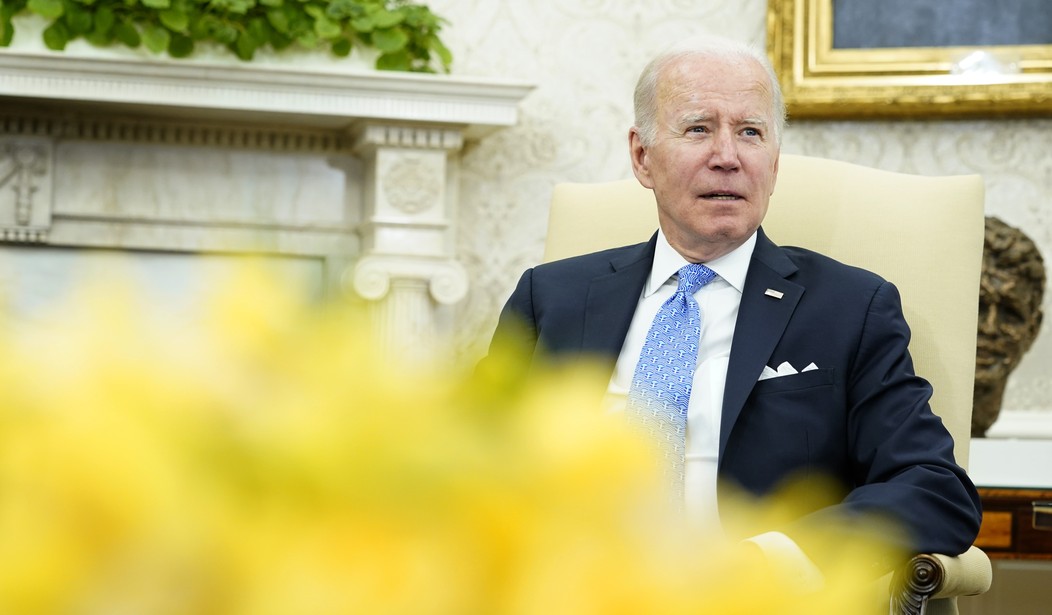With his approval rating in a freefall, President Joe Biden and those around him started hinting that he would forgive an arbitrary amount of student loan debt by executive order. Last week, Washington Post columnist James Hohmann indicated in a podcast interview that Georgia candidates Stacey Abrams and Raphael Warnock were lobbying the administration to forgive up to $10,000 in student loans.
According to Hohmann, “Stacey Abrams has been browbeating the White House on this, and says that this is the only way she could win — that this is going to be a base turnout election.” He added, “This isn’t about persuading people in the middle, it’s about getting the base to turn out.” A vital part of the Democrat base is younger voters.
Every analysis shows that this type of debt forgiveness is a bailout for the upper-middle-class, paid for by scores of working and middle-class voters who never went to college. However, a new analysis also indicates it may backfire with Gen Z, aka Zoomers, the youngest Americans who can vote in November. The higher education bubble Glenn Reynolds wrote about in 2012 may be bursting, thanks to the pandemic and skepticism among Zoomers about the value of a college degree.
According to the National Student Clearinghouse Research Center (NSCRC):
Enrollment declines continued to worsen this spring. Total postsecondary enrollment fell to 16.2 million this spring, marking a one-year decline of 4.1 percent or 685,000 students. Enrollment declined this spring at both undergraduate and graduate levels. Following a 3.5 percent drop last spring, postsecondary institutions have lost nearly 1.3 million students since spring 2020.
Undergraduate enrollment accounted for most of the decline, dropping 4.7 percent this spring or over 662,000 students from spring 2021. As a result, the undergraduate student body is now 9.4 percent or nearly 1.4 million students smaller than before the pandemic.
So, nearly 1.4 million students who may have attended college previously are not on campus. This trend could indicate factors other than the pandemic are impacting the decision of younger Americans of whether or not to invest in a college education.
Recommended: Awww: Joe Biden Is Angry That He’s Now More Unpopular Than Donald Trump
One characteristic that emerged as a theme for Gen Z is pragmatism, which was shaped by watching their parents struggle through the Great Recession. In 2018, one industry association reported Gen Z believed in saving. Seventy-two percent had a savings or checking account, and 83% said they would rather save for a big purchase than use credit. More than half did not have a credit card, and among those that do, 26% only have one.
Other outlets reported Gen Z was exploring the trades as an alternative to college as early as 2019. While Gen Z watched their older cousins get saddled with student loan debt and saw the openings created in skilled trades as Baby Boomers started to retire, trade schools saw an increase in enrollment. This trend is evident now as some of the most significant enrollment jumps are in trades programs:
Among popular majors at two-year colleges, skilled trades program enrollment increased, including gains in mechanic and repair technologies (+11.5%, 9,950 students), personal and culinary services (+12.7%, 6,170 students), construction trades (+19.3%, 11,140 students), and precision and production (+16.7%, 7,740 students). However, despite those increases, it was only construction majors where the growth was sufficient to yield a return to pre-pandemic levels of enrollment.
Perhaps even a two-year trades program is not required. Many employers offered sign-on bonuses, company-provided training, and other perks to fill their vacant positions post-pandemic. Even now, help wanted signs are not difficult to find. At the end of April, the Bureau of Labor Statistics reported 11.4 million open jobs. These factors reduce the incentive to take on student loans.
So if you are under 26 and skipped college to go straight to work or learn a trade, how happy will you be to pay off the student loan debt of college graduates whose lifetime earnings are likely to be higher than yours? Gen Z is pretty financially savvy. In 2021, the average Zoomer had $35,000 in retirement savings. It won’t be a stretch for them to figure out the wealth transfer Democrats are trying to shove in their lap.
Current inflation rates and shortages will impact pragmatic Gen Z, and the news they get to pay for someone else’s debt won’t be a cause for celebration. It may make them decide to vote differently than Abrams and Warnock think.
Please make Rep. Alexandria Ocasio-Cortez, with her designer clothes and leased Tesla, the poster child for this blatant bid to stem the Democrats’ bleeding in the midterms. It could be a move that makes Gen Z eye Democrats with the same skepticism with which many of them view a college degree.










Join the conversation as a VIP Member